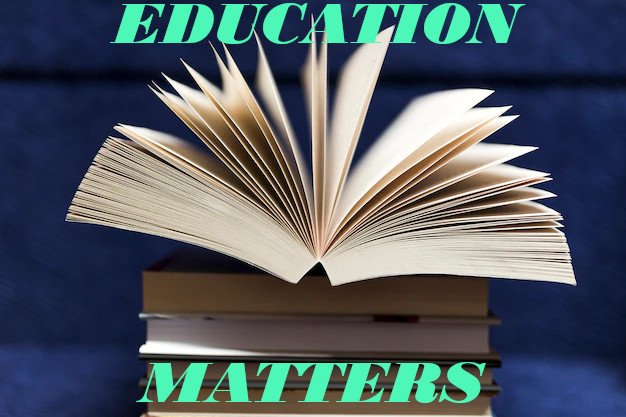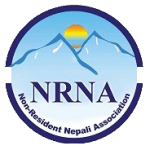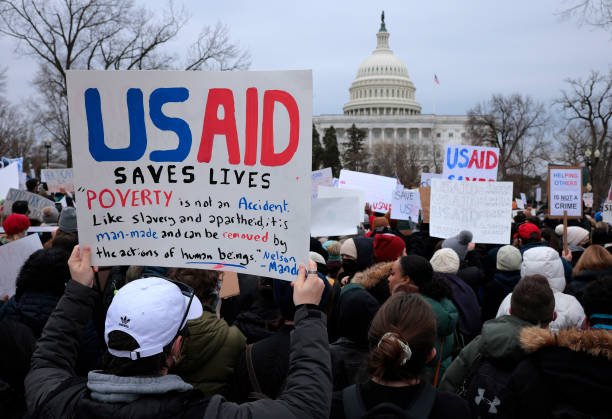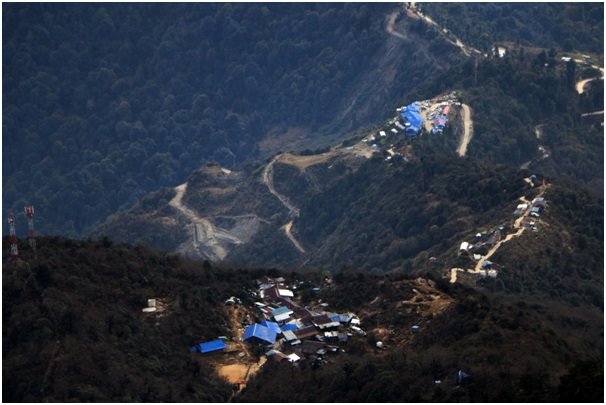Education Matters: Understanding Nepal’s Education

Welcome to the inaugural article of “Education Matters”, a thought-provoking series that sheds light on the pressing issues within Nepal’s educational system while fostering a spirit of positive transformation. In this first installment, I provide an overview of the current state of education in Nepal, examining the general problems faced by the system. I also delve into the experiences of individuals who have pursued education abroad, exploring their struggles in utilizing their Nepalese education and credentials effectively. As I embark on this enlightening journey, I invite you to join me in uncovering the concerns within Nepal’s education system and inspiring meaningful change. Together, we can ensure that education truly matters, empowering every Nepalese child with the quality education they deserve.
Education as a Fundamental Right
The right to education, including quality education, is enshrined in both international and national frameworks. Article 26 of the Universal Declaration of Human Rights (UDHR) establishes the right to universal free primary education and emphasizes the full development of the human personality. Furthermore, Article 31 of the Constitution of Nepal reinforces the fundamental right to education for every child, emphasizing equal access to quality education without discrimination. These provisions underscore the importance of education as a basic entitlement and the responsibility of governments to ensure inclusive, equitable, and accessible education for all individuals. Therefore, education is not merely a privilege but a fundamental right that every Nepalese citizen is entitled to, ensuring their access to “quality” education, and it is the responsibility of our government to guarantee this right.
As we delve deeper into Nepal’s educational landscape, it’s important to transition from our understanding of education as a fundamental right to a realistic exploration of the current state of Nepalese education. While we recognize the government’s constitutional obligation to ensure equal access to quality education, the stark reality is that this noble aspiration is far from being realized. The Central Bureau of Statistics reported a literacy rate of 76.2%—with a conspicuous gender gap—and the disparities in educational achievement across socio-economic, caste, and geographic divides, underscore the enormity of the challenges at hand. Nepal’s per capita income of a mere $1208 in 2021 highlights the immense financial challenges the government faces in improving the educational infrastructure. When we juxtapose this with the huge sums allocated per student in countries like Luxembourg ($24,000) and the United States ($14,400), the enormity of the task before the Nepalese government becomes evident. As we move forward, let’s examine in detail the current state of Nepal’s education system and the plethora of challenges it faces, from institutional controversies to the undervaluing of Nepalese educational credentials in the global market.
The State of Nepalese Education
The challenges faced by Nepal’s education system are overshadowed by the declining reputation of our institutions of higher education. Controversies, including accusations of plagiarism against university leadership, coupled with the detrimental presence of self-serving, under-educated, and low-energy education ministers, significantly erode the national and international value of our educational credentials, including those obtained from esteemed educational organizations. In Nepal, graduates frequently suffer from a profound lack of confidence in their knowledge and abilities, exacerbating the mounting unemployment rate and stifling their aspirations to become entrepreneurs, indicative of our failure to establish clear learning objectives and the purpose behind the teaching. Consequently, many find themselves toiling under arduous conditions in the scorching heat of the Middle East, earning meager wages. Our educational institutions have little involvement in Nepal’s policymaking and lack research on topics crucial to our present and future. The diminishing global value of Nepal’s educational credentials is evident in the trend of skilled professionals and students resorting to manual labor abroad, unrelated to their field of study. For instance, Nepalese medical doctors or high-profile government officials can be found working in restaurants as dishwashers or performing heavy-duty cleaning or farm jobs in the international markets. Similarly, many Nepalese students pursuing higher education in Europe, Australia, and to a lesser extent, America, end up in menial jobs. This underutilization of skills and education underscores a significant gap between Nepal’s education system and the global labor market.
Another alarming concern is the noticeable decline in ethical standards within the system. Instances such as the Home Ministry allegedly converting Nepalese citizens into fake Bhutanese refugees for financial gains exemplify the crisis at hand. The willingness of Nepalese citizens to pay substantial sums to leave the country highlights the lack of domestic opportunities and their desire to escape the erosion of moral values. Unethical conduct, characterized by a relentless pursuit of monetary gain regardless of the cost, deceiving fellow Nepalese, and creating organizations solely for the purpose of projecting false power, is pervasive among both Nepalese citizens and first-generation non-resident Nepalese who primarily receive their education in Nepal. Nepalese individuals amassing wealth overseas often use their connections with corrupt leaders in Nepal to embezzle taxpayers’ funds. It is not uncommon to witness businesses established in developed countries through money laundering from Nepal, masquerading as financial institutions, luring hundreds of thousands of innocent Nepalese savers with the temptation of high-interest rates. After accumulating billions of rupees, these entities vanish, leaving their unsuspecting victims in financial ruin for the rest of their lives. Furthermore, in these developed countries, they exploit vulnerable Nepalese students and newcomers in such companies, perpetuating their unethical behavior on an international scale. Even known global organizations supposedly working in favor of the Nepalese’s interests, at national and international levels, resemble disorganized political parties and are led by power-hungry individuals. All these unethical practices stem directly from the decline of our education system and its failure to establish a common set of values.
The landscape of Nepalese education was further thrust into unchartered territory with the advent of the COVID-19 pandemic. This global health crisis has not only exacerbated pre-existing challenges but also introduced new ones, with far-reaching consequences on the learning experiences of students worldwide. As we transition from a critical examination of the inherent issues within our education system to the impacts of this unprecedented pandemic, we must contemplate on the gravity of these recent challenges and their implications on our pursuit of educational progress.
Challenges of COVID-19 on Education
Recent estimates by the World Bank reveal that learning losses from COVID-19 could cost this generation of students close to USD 17 trillion in lifetime earnings globally. Additionally, a study conducted by Stanford University economist suggests that learning loss during the pandemic could result in a reduction of USD 70,000 in the lifetime earnings of children who were in school. Multiple recent studies, including research conducted by Harvard University and the National Assessment of Educational Progress in the United States, as well as studies in Europe and other developed countries, have consistently reported similar findings. These findings highlight the alarming magnitude of learning loss and underscore the urgent need for comprehensive measures to address educational challenges. Amidst the global endeavor to comprehend the devastating learning loss inflicted by COVID-19 and its far-reaching repercussions on students, it is crucial to recognize the acute effects of this crisis on students in Nepal. Unfortunately, there are only sporadic grants attempting to measure the extent of the damage, which increases the chances of Nepal’s plight remaining overlooked. The pandemic has worsened existing challenges, disproportionately affecting those who lacked access to remote learning resources, enduring widespread poverty, and facing inadequately equipped educators. Furthermore, the government’s lackluster response, tarnished by allegations of corruption, has compounded these issues during this critical period.
As if the trials brought about by the pandemic weren’t enough, the Nepalese education system is still reeling from the severe impact of the devastating 2015 earthquake. This catastrophic event had already fractured the fabric of our educational infrastructure, caused extensive damage, and interrupted the educational journey of millions of students.
Challenges from the 2015 Earthquake
The 2015 earthquake inflicted significant damage, destroying 8, 242 public schools, with 25,000 classrooms completely demolished and 22,000 partially damaged, as reported by the United Nations Office for Disaster Risk Reduction (UNDRR). Moreover, this already fragile educational landscape was further disrupted as approximately 1.7 million students were repeatedly displaced due to subsequent aftershocks, resulting in a disruption in enrollment, attendance, and learning outcomes, as highlighted by reports from bbc.co.uk. The estimated extent of damage and losses in the education sector due to the earthquake alone amounted to around NPR 31.3 billion, requiring approximately NPR 39.70 billion for the recovery and reconstruction as indicated in the Post Disaster Needs Assessment by the National Planning Commission of Nepal. It is imperative to prioritize the repair and rebuilding of schools and classrooms while implementing short- and long-term measures to regain what has been lost.
Amidst the struggle to recover from the destructive earthquake and the relentless impact of COVID-19, there is an equally significant phenomenon that warrants our attention—the exodus of young, working-class individuals from Nepal. The past difficulties have not only tested the resilience of our education system but also led to the burgeoning of a diaspora contributing significantly to the nation’s economy through remittances. As we shift our focus from the aftermath of natural and global health disasters to the economic ramifications of this mass migration, we must dissect the implications of this trend, its interplay with the state of education, and the questions it raises about the future of Nepal.
The Exodus of Young, Working-class Individuals
Based on a historical analysis of World Bank data, remittance inflows to Nepal have witnessed significant growth over the years. The contribution of remittances to the country’s Gross Domestic Product (GDP) increased from close to 1% in 1997 AD to 2% in 2000 AD. This growth accelerated drastically, reaching 11.2% in 2002 during the peak of the Maoist insurgency. The trend continued even after the civil movement of 2004/5 when new leadership assumed power following the Interim Constitution of 2007, and further after the implementation of the New Constitution in September 2015.
In recent times, a report from the World Bank reveals that remittances have constituted a substantial proportion of approximately 22.7% of Nepal’s GDP in 2021 AD. This is a continuation of a slight decline in the post-COVID-19 era from the all-time high of 27.6% in 2015. Notably, a thought-provoking article by Sashi Kanta Chaudhary in the NRB Economic Review highlighted that Nepal’s remittance inflow in 2020, amounting to NPR 875 billion, surpassed the combined amounts of gross exports, official development assistance, and foreign direct investment received in the same year. These statistics raise important questions about celebrating or expressing concern over the heavy reliance of Nepal’s economy on remittances. According to current news articles, more than 3,000 Nepali youths board planes every day to work or study abroad, with a significant proportion bidding farewell to their homeland indefinitely.
Most recent reports bring additional perspectives to this unfolding scenario. As per popular news outlets, an estimated 121,000 Nepalese students exited the country for further studies in the year 2022 AD alone – a trend that is on the rise. Ministry of Education reports corroborate this narrative, with Nepalese students attending over 360 international universities across 106 different countries. A sobering revelation is that, even by the most conservative estimates, assuming that students earn their living and tuition from their second year onward in these foreign lands (which is almost impossible), over 3 billion USD per year is being drained from Nepal under the pretext of overseas education and living expenses.
The decline in remittance rates in the aftermath of the pandemic has triggered a ripple effect of apprehension across political parties, news media, and think tanks. Nepal’s significant reliance on remittance displays characteristics common to countries grappling with similar issues – unstable governments, endemic corruption, dwindling moral values, high crime rates, stark income disparities, judicial distrust, and the collective yearning to emigrate for a brighter future. The parallels between these unsettling trends and the decline of Nepal’s education system, a causality of politicization for petty political and personal gains, are impossible to ignore. This narrative of the exodus of young, working-class individuals forms a stark commentary on the state of affairs in Nepal and underscores the urgency for systemic reforms.
Building Sustainable Future and Role of Quality Education
As we cast our eyes on the present challenges towards a promising future, it becomes evident that our strategy must prioritize quality education, technological advancement, and sustainable development. With the rapid acceleration of the digital era, technology, artificial intelligence, and digital outsourcing become fertile grounds for limitless opportunities, if we start working right now. Multinational companies increasingly leverage outsourcing as a cost-efficient approach to creating affordable products. In this context, an investment in Nepalese education symbolizes unlocking these opportunities, thus fostering an economic transformation, and triggering a much-needed systemic cleanse, particularly in politics and corruption.
Recovering from the devastating blows of the earthquake and pandemic requires a holistic and sustainable strategy – a resolute commitment to prioritizing education and equitable distribution of resources to ensure no student is left behind. The daunting reality of Nepal’s current state should be a clarion call for all, leading to potential pitfalls that lay ahead. The spotlight must remain firmly on our government and educational institutions’ shortcomings, propelling a unified, unyielding effort to dismantle the rampant corruption and polarization hindering our progress.
With education recognized as a fundamental right, Nepal has already taken strides in promoting personal growth, social justice, and civic engagement for every citizen, at least on paper. Providing equal opportunities to acquire knowledge, skills, and values is a critical stepping stone to a brighter future. Prioritizing and investing in quality education thus becomes a potent catalyst for empowering individuals, driving social progress, and creating a more equitable and prosperous society.
To this end, we must also acknowledge the work undertaken by the Government of Nepal in collaboration with national and international organizations like UNICEF. They have endeavored to create a more balanced and inclusive society, most notably by extending compulsory basic education to eight years. Past initiatives such as the School Sector Reform Plan (2009 – 2016 AD), and the Education for All Program (2004 – 2009), have laid the groundwork for necessary reforms. Furthermore, the School Sector Development Plan (SSDP) has been instrumental in designing a strategic framework aimed at enhancing human resources capacity and providing essential literacy, numeracy, and life skills.
Education, in the grand scheme of things, is not merely a component of our system – it is the engine that drives societal transformation, paving the path towards a sustainable future. This journey, though lined with challenges, can be traversed with quality education and unwavering determination. Together, we can turn the tide and shape the Nepal we envision.
Thank you for your time and participation in this journey. In my next issue, I will delve into the debate surrounding private and public schools in Nepal, addressing concerns about our assessment practices, the lack of psychometric value, inadequate scientific practices, and questions surrounding the motivations and quality of education provided by both types of institutions.







Leave Comment